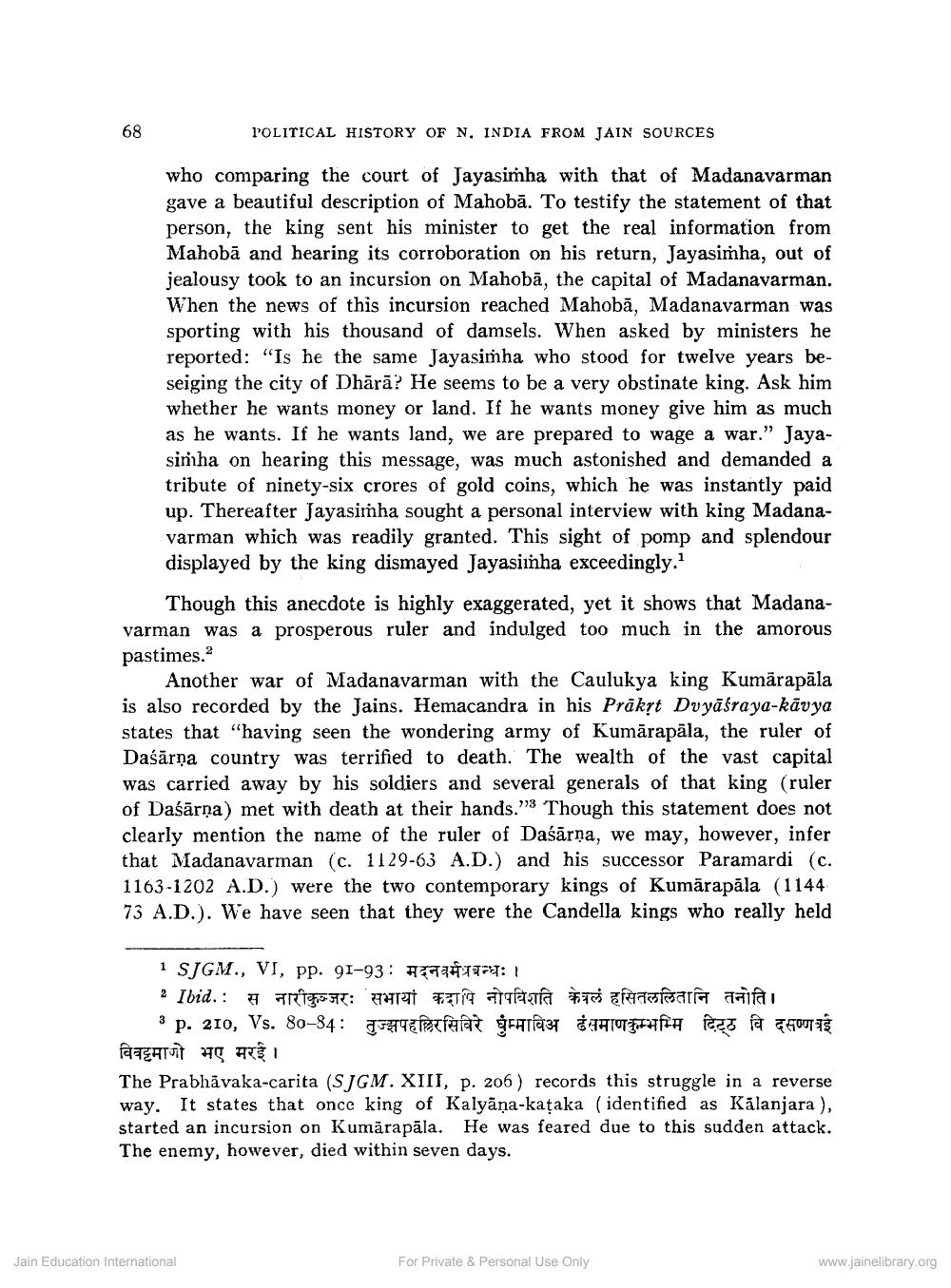________________
POLITICAL HISTORY OF N. INDIA FROM JAIN SOURCES
who comparing the court of Jayasimha with that of Madanavarman gave a beautiful description of Mahobā. To testify the statement of that person, the king sent his minister to get the real information from Mahobā and hearing its corroboration on his return, Jayasimha, out of jealousy took to an incursion on Mahobā, the capital of Madanavarman. When the news of this incursion reached Mahobă, Madanavarman was sporting with his thousand of damsels. When asked by ministers he reported: "Is he the same Jayasimha who stood for twelve years beseiging the city of Dhārā? He seems to be a very obstinate king. Ask him whether he wants money or land. If he wants money give him as much as he wants. If he wants land, we are prepared to wage a war." Jayasimha on hearing this message, was much astonished and demanded a tribute of ninety-six crores of gold coins, which he was instantly paid up. Thereafter Jayasimha sought a personal interview with king Madanavarman which was readily granted. This sight of pomp and splendour displayed by the king dismayed Jayasinha exceedingly.
Though this anecdote is highly exaggerated, yet it shows that Madanavarman was a prosperous ruler and indulged too much in the amorous pastimes.
Another war of Madanavarman with the Caulukya king Kumārapāla is also recorded by the Jains. Hemacandra in his Prākıt Dvyāśraya-kāvya states that “having seen the wondering army of Kumārapāla, the ruler of Daśārņa country was terrified to death. The wealth of the vast capital was carried away by his soldiers and several generals of that king (ruler of Daśārna) met with death at their hands." Though this statement does not clearly mention the name of the ruler of Daśārna, we may, however, infer that Madanavarman (c. 1129-63 A.D.) and his successor Paramardi (c. 1163-1202 A.D.) were the two contemporary kings of Kumārapāla (1144 73 A.D.). We have seen that they were the Candella kings who really held
1 SJGM., VI, pp. 91-93: #7777972: ? Ibid.: # Art HT: 247271 AT ATTET T homara Taifa
3 p. 210, Vs. 80-84: 594CERTAT FAT3T AHH H FET @ GOOTT विवट्टमागो भए मरई। The Prabhāvaka-carita (SJGM. XIII, p. 206) records this struggle in a reverse way. It states that once king of Kalyāņa-kataka (identified as Kälanjara ), started an incursion on Kumārapāla. He was feared due to this sudden attack. The enemy, however, died within seven days.
Jain Education International
For Private & Personal Use Only
www.jainelibrary.org




